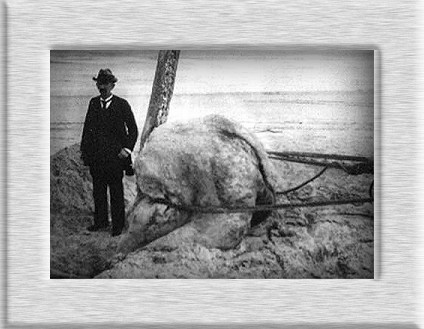|
Octopus giganteus A. E. Verrill, 1897 Giant Octopus |
|
|
| Decaying mass, stranded, ca. 5 mi. S. St. Augustine Inlet, Anastasia Is. H. Coles and D. Coretter! 11/30/1896. The history of this discovery is presented by Mangiacopra (1975; 1976) and Mangiacopra et al. (1994). Although Verrill shortly rescinded his taxonomic assignment (in favor of a Sperm Whale snout), cryptozoologists have pondered this unique specimen since its description. The holotype (USNM number 149380, fide M. G. Harasewych, pers. comm. 4/19/2000) is a chunk of tissue, portions of which are still on loan to a worker. Based on biochemical analysis of the holotype, this "sea monster" was said to be an octopod, not a vertebrate or even a squid (Gennaro, 1971; Mackal, 1986). However, Pierce et al. (1995) gave a trenchant argument (with new, more rigorous histologic and biochemical evidence) for its warm-blooded vertebrate (cetacean) origin. Almost certainly not a mollusk. |
